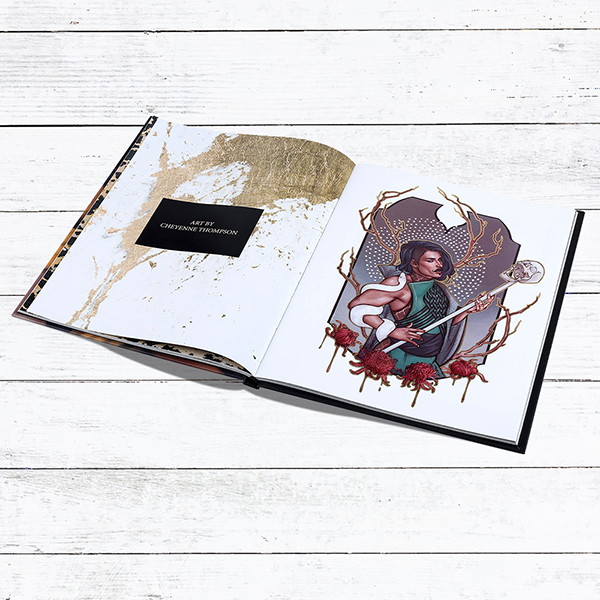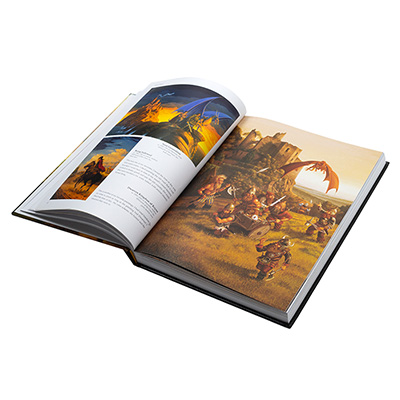Small Batch art book Printing: What You Should Know
Small Batch art book Printing: What You Should Know
Blog Article
Discover the Important Overview to Art Book Printing for Aspiring Artists and Publishers
As an aspiring artist or publisher, comprehending the nuances of art book printing is necessary to bringing your vision to life. You'll need to take right into account different factors, from picking the ideal kind of book to making certain color precision and choosing suitable products. Each choice impacts the final item significantly. What are the key aspects you should focus on to create a sensational art book that truly represents your job?
Comprehending Different Kinds of Art Books
When you dive into the world of art publications, you'll quickly discover that they can be found in numerous forms, each customized to different creative expressions and audiences. Coffee table publications frequently display magnificent visuals, excellent for laid-back surfing, while essays dive deep into an individual musician's job, giving context and insights. If you have an interest in details art activities, exhibit catalogs use thorough paperwork of programs, including essays and reviews.
For instructional objectives, art manuals and technique books guide you through numerous tools and styles, making them important for aiming artists. Each style serves its function, and understanding their differences can improve your art book journey.
Picking the Right Paper and Materials
Selecting the ideal paper and materials can significantly influence the general top quality and feel of your art book. Beginning by considering the sort of art work you have. For lively shades and detailed information, select a glossy surface or a heavyweight matte paper that improves visual deepness. If your work includes softer tones or appearances, an all-natural or uncoated paper can provide a warm, inviting touch.
Consider the weight of the paper, too. Thicker choices usually lend an even more expert look, while lighter documents can minimize printing costs. Don't forget the binding materials; a tough cover can shield your web pages and contribute to the book's aesthetic.
Finally, consider sustainability. Environmentally friendly alternatives are getting popularity and can show your values as an artist. By thoroughly choosing your paper and products, you'll ensure that your art book not just looks great but likewise really feels unique in the hands of your visitors.

Selecting the very best Printing Strategies
When it concerns publishing your art book, selecting in between balanced out and electronic printing can substantially influence your end product. You'll additionally want to think about just how paper quality influences the general appearance and feeling of your art work. Allow's check out these key printing techniques to discover the most effective fit for your project.
Balanced Out vs. Digital Printing
While both offset and digital printing have their benefits, selecting the appropriate method for your art book can significantly influence the end product. Offset printing supplies high-grade images and vibrant colors, making it suitable for bigger print runs. If you're seeking to create hundreds or hundreds of duplicates, balance out will certainly offer you regular results and reduced per-unit prices. On the other hand, electronic printing succeeds for smaller sized quantities and quicker turn-around times. It enables very easy modification, enabling you to print distinct copies without extra setup expenses. Consider your budget, timeline, and the volume of your project. Inevitably, your selection needs to straighten with your artistic vision and circulation technique, making sure that your art book mirrors the quality you want.
Paper High Quality Factors To Consider
Selecting the right paper quality can considerably improve the visual charm and tactile experience of your art book. For prints, a glossy coating can make images pop, while a matte surface gives a softer, more refined look.
Next, think about the sustainability of your option. Eco-friendly choices are coming to be significantly prominent and can attract environmentally-conscious readers. Demand examples to see exactly how various documents work with your artwork, guaranteeing the final product mirrors your vision flawlessly.
Making Sure Color Accuracy in Your Prints
To attain sensational prints, you need to concentrate on shade precision from the beginning. You'll desire to use shade calibration techniques to validate your display and printer are in sync. Furthermore, proofing your job prior to the last print run can assist capture any type of inconsistencies, guaranteeing your art looks equally as you visualized.
Color Calibration Strategies
Guaranteeing shade accuracy in your prints begins with efficient shade calibration strategies that aid preserve uniformity in between your electronic images and last published products. Next, pick a shade account suited for your printing process, like CMYK for print materials. By constantly using these strategies, you'll boost the total quality of your art prints and better convey your creative vision.
Proofing for Accuracy
While you may believe your digital images await print, proofing is vital for achieving shade precision. Prior to devoting to a full print run, always request an evidence from your printer. This permits you to see just how shades convert from display to paper. Contrast the evidence with your adjusted monitor to identify any discrepancies. Take note of saturation, brightness, and shade, as these variables can substantially affect your end click this site product.
If adjustments are needed, communicate plainly with your printer regarding your wanted outcomes. Don't think twice to demand several evidence if required; it deserves the financial investment to obtain it right. Inevitably, detailed proofing guarantees that your artwork is represented as you visualized it, maintaining your artistic integrity throughout the printing process.

Designing Layouts That Enhance Your Artwork
When you design formats for your art book, it's important to consider how each element engages with your art work. Purpose for use this link an equilibrium between visuals and message, making sure neither eclipses the various other. Usage white area strategically; it provides your artwork area to breathe and accentuates its details.
Think about the circulation of your book. Set up photos in such a way that guides the viewers's eye, developing a narrative or thematic progression. art book. Vary the dimensions and alignments of your art work to keep the format vibrant and intriguing
Select fonts that enhance your artwork without distracting from it. Keep text concise and relevant, offering context or insight that enhances the viewer's experience.
Lastly, test various designs. Publish examples to see just how the layouts equate on paper, and readjust as required. By attentively creating your designs, you'll create a visually appealing art book that reverberates with your target market.
Binding Options for an Expert Complete
Choosing the right binding choice can greatly impact the overall presentation of your art book. You'll desire to take into account both looks and resilience when making your selection. Popular alternatives include best binding, which uses a smooth appearance and is excellent for thicker publications; saddle sewing, suitable for smaller booklets; and spiral binding, which permits web pages to lay level for easy watching.
If you're going for a premium feel, instance binding is a superb selection, supplying a durable cover and a specialist appearance (art book). Don't forget about the cover product; options like cloth, leather, or a glossy coating can elevate your book's charm
Whatever alternative you choose, make certain it matches your artwork and improves the reader's experience. Take check my blog your time to consider the pros and cons of each approach, so your end product reflects the top quality of your imaginative vision.
Preparing Your Declare Print Readiness
To guarantee your art book is print-ready, you'll require to pay close attention to file preparation. Beginning by setting your paper size to match your desired print dimensions. Use high-resolution pictures-- 300 DPI is the criterion-- to determine sharp, vibrant visuals. Transform your files to CMYK setting, as this color space is ideal for printing. Don't forget to include bleed areas, usually an extra 0.125 inches around your web pages, to prevent any white edges after trimming.
Likewise, install your fonts or transform message to describes to stay clear of any typeface concerns. Conserve your operate in a PDF style, as this is one of the most approved documents kind for printers. Verify your apply for any typos or design errors, as adjustments can be pricey after the truth. Take into consideration developing an evidence to assess before the last print run. Complying with these steps will help you attain a polished, specialist art book.
Regularly Asked Questions
What Is the Typical Expense of Printing an Art Book?
The average cost of publishing an art book varies, yet you can anticipate to pay anywhere from $5 to $20 per copy, depending on factors like dimension, paper top quality, and printing volume.
Just How Can I Find a Reliable Printing Firm?
To locate a trustworthy printing business, begin by researching on-line testimonials and asking fellow musicians for referrals. Compare quotes, examine profiles, and connect your demands clearly to ensure they understand your vision and quality assumptions.
What Is the Regular Turn-around Time for Printing?
The typical turnaround time for printing differs however generally varies from one to 4 weeks. Factors like task complexity and volume can impact this. Constantly verify with your chosen printer for particular timelines and assumptions.
Can I Publish My Art Book in Limited Quantities?
Yes, you can absolutely publish your art book in restricted quantities. Several printing companies offer short-run alternatives, enabling you to produce simply the number you need, making it easier to handle prices and stock.
What Lawful Considerations Should I Know for My Art Book?
You should think about copyright, licensing arrangements, and design launches when producing your art book. Ensure you have the right to utilize all pictures and text, shielding on your own from possible lawful problems in the future.
Report this page